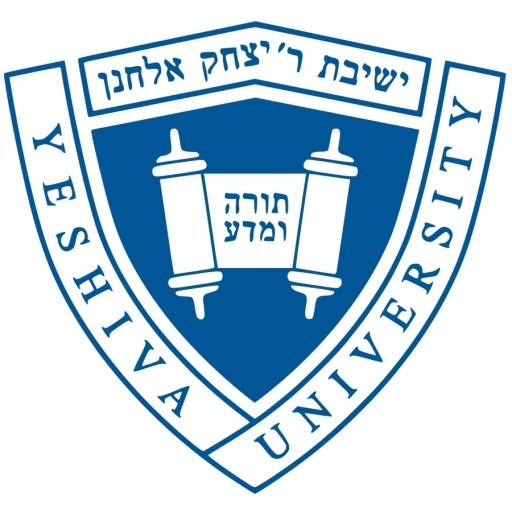Photos of university / #dwublue
The Bachelor of Arts degree is generally completed in approximately 4 years.
Field of study: Fine Arts and Art Studies, Other
The Bachelor of Arts in Art at Dakota Wesleyan University offers students a comprehensive and enriching education in the visual arts, designed to foster both technical skills and creative expression. The program provides students with a solid foundation in art history, drawing, painting, sculpture, and digital media, encouraging experimentation and innovation across various artistic mediums. Through a blend of rigorous coursework, individual mentorship, and hands-on studio practice, students develop a keen eye for detail, strong conceptual thinking, and proficiency in both traditional and contemporary art techniques. The curriculum emphasizes critical analysis, meaning that students learn to articulate their artistic ideas effectively and engage thoughtfully with the works of others.
Students have access to state-of-the-art studio facilities and are encouraged to participate in exhibitions, internships, and community projects, which enhance their practical experience and prepare them for diverse careers in the arts. The program also promotes interdisciplinary collaboration, allowing students to explore connections between art and other fields such as education, business, and technology. Faculty members, experienced artists and educators, mentor students closely, guiding them through their artistic development and helping them build a professional portfolio. Graduates of the Art program at Dakota Wesleyan University are well-equipped to pursue careers in fine arts, graphic design, illustration, art education, curatorial work, or to continue their studies in graduate programs. With a commitment to artistic excellence and personal growth, the program aims to cultivate the next generation of innovative artists and cultural contributors.
Program requirements for the Bachelor of Arts in Art at Dakota Wesleyan University include a combination of core coursework, elective options, and practical experiences designed to develop students' technical skills, artistic understanding, and professional readiness. Students must complete a minimum of 120 credit hours to earn the degree. The required core courses typically encompass foundational classes such as Drawing I and II, Two-Dimensional Design, Three-Dimensional Design, Art History surveys, and Studio Art courses in areas like Painting, Sculpture, and Printmaking. Students are encouraged to participate in advanced studio courses to refine their techniques and develop a personal artistic style.
In addition, the program emphasizes the importance of visual literacy and contextual understanding, requiring students to take courses in Art History that span different periods and cultures, fostering historical and cultural awareness essential for contemporary artists. A crucial component of the program involves portfolio development, which often begins early and culminates in a senior exhibition or capstone project that showcases students’ best work and artistic growth. The program may also include internship opportunities or community art projects, providing real-world experience and professional networking.
Students should complete coursework in academic writing and critical analysis to enhance their ability to articulate their artistic concepts effectively. To support interdisciplinary engagement, electives outside the art department may be selected, encouraging exploration of related fields such as design, digital media, or education. The program may require participation in faculty-led critiques and art seminars to promote constructive feedback and professional development.
Technical proficiency in various media, understanding of art-related software tools, and familiarity with contemporary art practices are also emphasized, preparing students for careers in the arts, education, or further graduate study. Residency or studio hours are typically mandated to ensure hands-on learning and artistic experimentation. The university often recommends that students engage in art exhibitions and community outreach to build a professional portfolio and network. Overall, completion of the Bachelor of Arts in Art at Dakota Wesleyan University provides students with a comprehensive education in both the theoretical and practical aspects of visual art, fostering their growth as creative, critical, and culturally aware individuals.
The financing of the Art (ART) program at Dakota Wesleyan University is structured to provide students with accessible and flexible options for funding their education. The university offers a range of financial aid opportunities, including scholarships, grants, student loans, and work-study programs. Prospective students are encouraged to complete the Free Application for Federal Student Aid (FAFSA) to determine eligibility for federal aid programs, which can significantly reduce the out-of-pocket expenses associated with pursuing a degree in Art. In addition to federal assistance, Dakota Wesleyan University provides institutional scholarships based on academic achievement, artistic talent, and financial need. These scholarships are awarded annually and may be renewable based on continued academic performance and participation in the program.
Furthermore, the university offers work-study opportunities within the campus community, allowing students to earn money while gaining valuable experience related to their field of study. The amount of financial aid awarded varies depending on the student’s financial need, academic performance, and available funding resources. Students are also encouraged to seek external scholarships and private grants, which can further supplement their educational funding. Payment plans are available to help manage tuition costs over the duration of the program, providing monthly or semester-based installments to ease financial burdens.
Dakota Wesleyan University maintains transparency regarding costs and financial aid options through its financial aid office, where students can receive personalized guidance on financing their Art studies. The university aims to ensure that financial barriers do not prevent qualified students from pursuing their art education and offers comprehensive support throughout the application and enrollment process. Overall, the financing of the Art program is designed to assist students in achieving their academic and artistic goals by providing diverse funding avenues, personalized financial planning, and ongoing support.
The Art program at Dakota Wesleyan University offers students a comprehensive education in the visual arts, emphasizing both foundational skills and creative expression. The curriculum is designed to develop technical proficiency in various mediums, including drawing, painting, sculpture, and digital arts, while fostering critical thinking and interpretative abilities. Students enrolled in the program have access to state-of-the-art facilities, such as well-equipped studios, art laboratories, and exhibition spaces, providing an ideal environment for hands-on learning and experimentation. The faculty comprises experienced artists and educators dedicated to mentoring students and nurturing individual artistic voices. Coursework typically includes studio practice, art history, contemporary art issues, and portfolio development, ensuring that graduates are well-prepared for careers in the arts or further graduate study. The program encourages participation in exhibitions, internships, and art competitions to build professional experience and industry connections. Additionally, the university often hosts visiting artists and workshops, enriching the educational experience with exposure to diverse artistic perspectives. Graduates from the Art program have successfully pursued careers as professional artists, designers, educators, and arts administrators. The program emphasizes creativity, technical skill, and critical analysis, aiming to prepare students to thrive creatively and professionally in the dynamic world of contemporary art.


